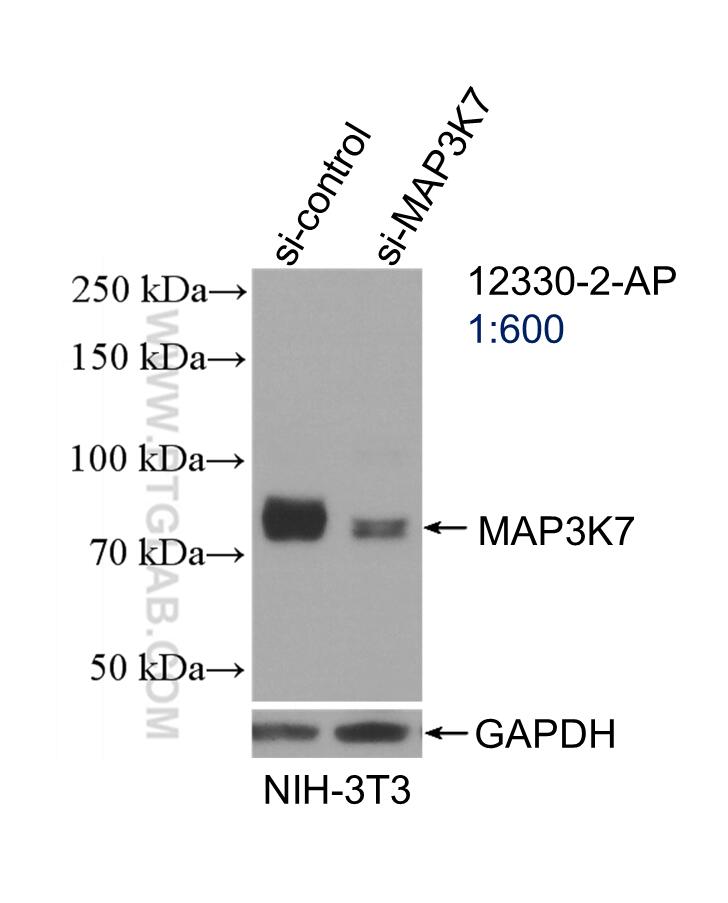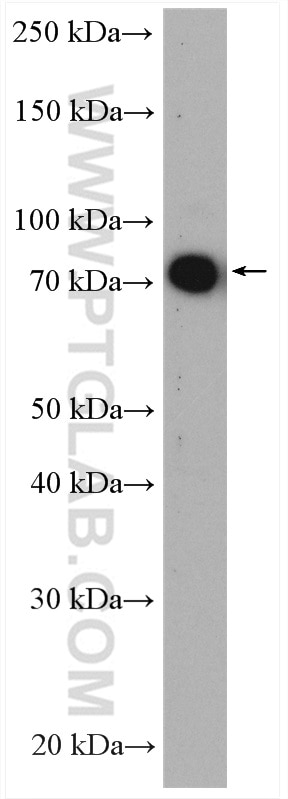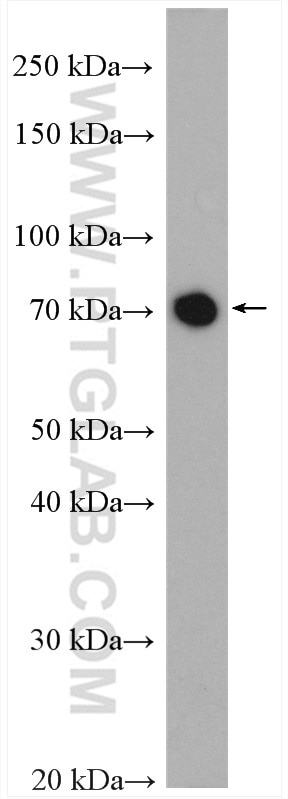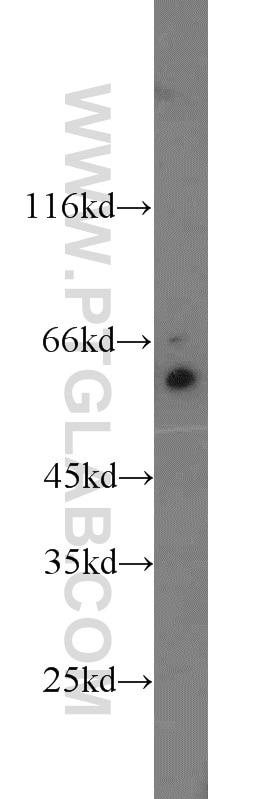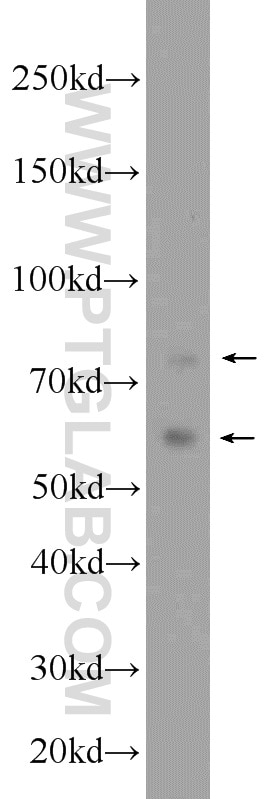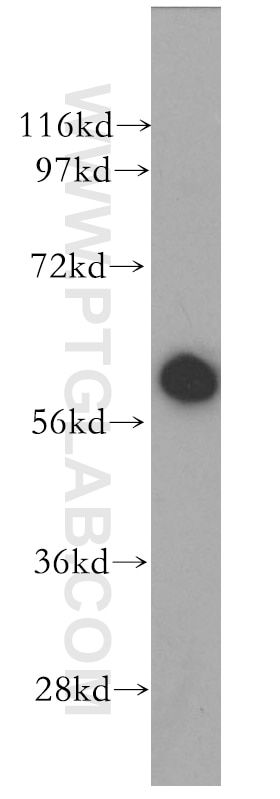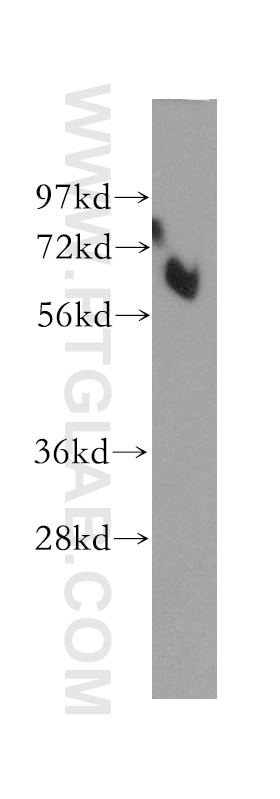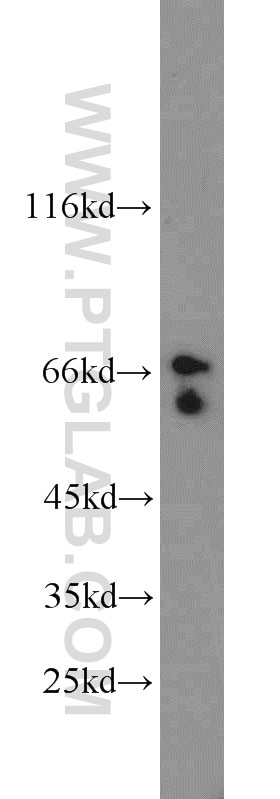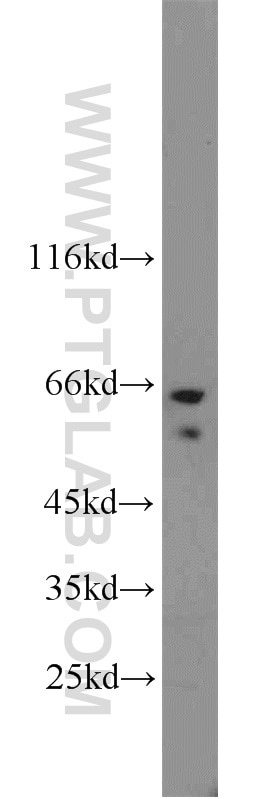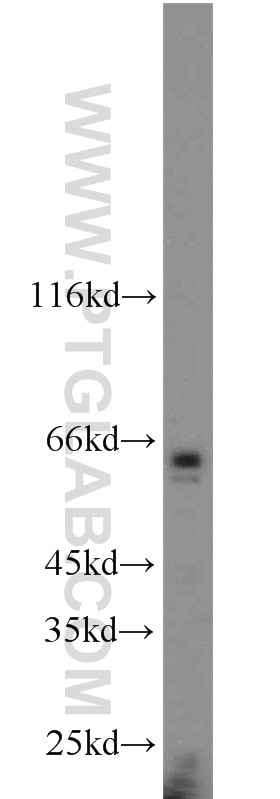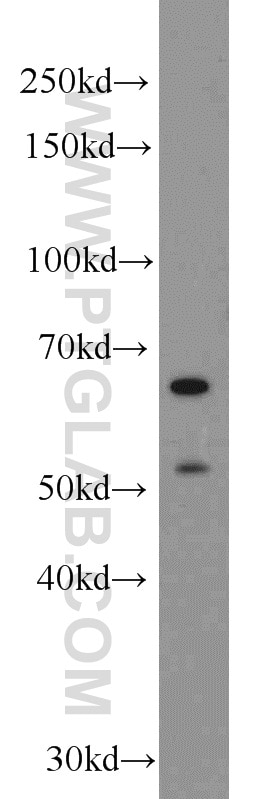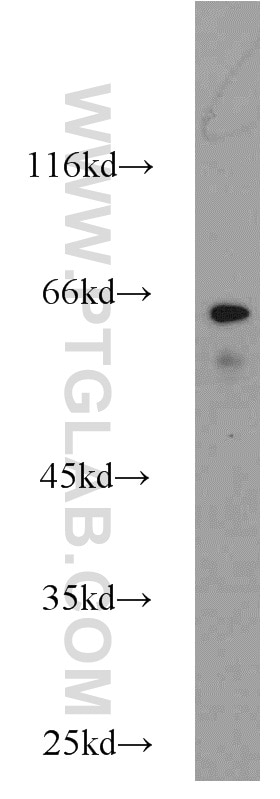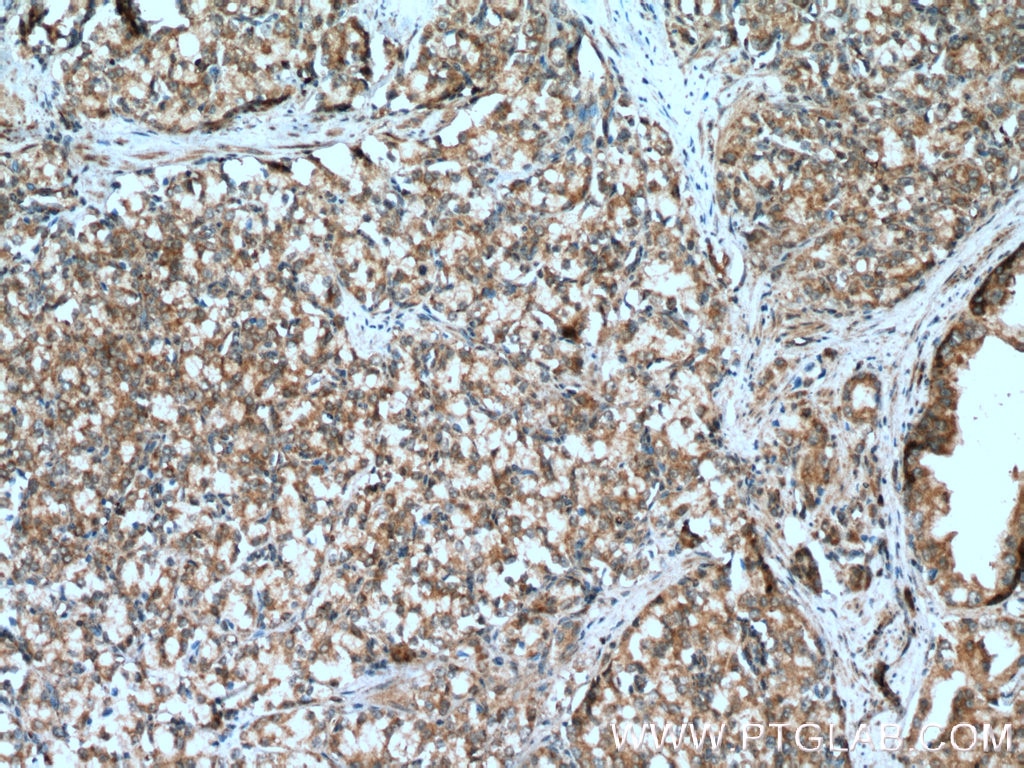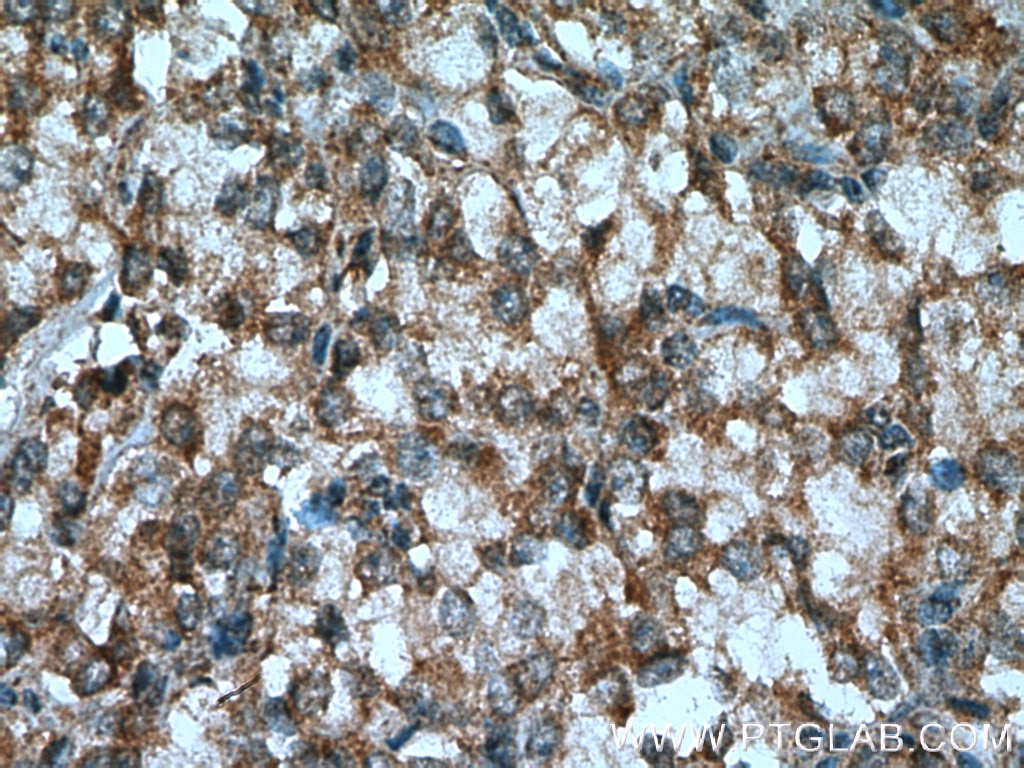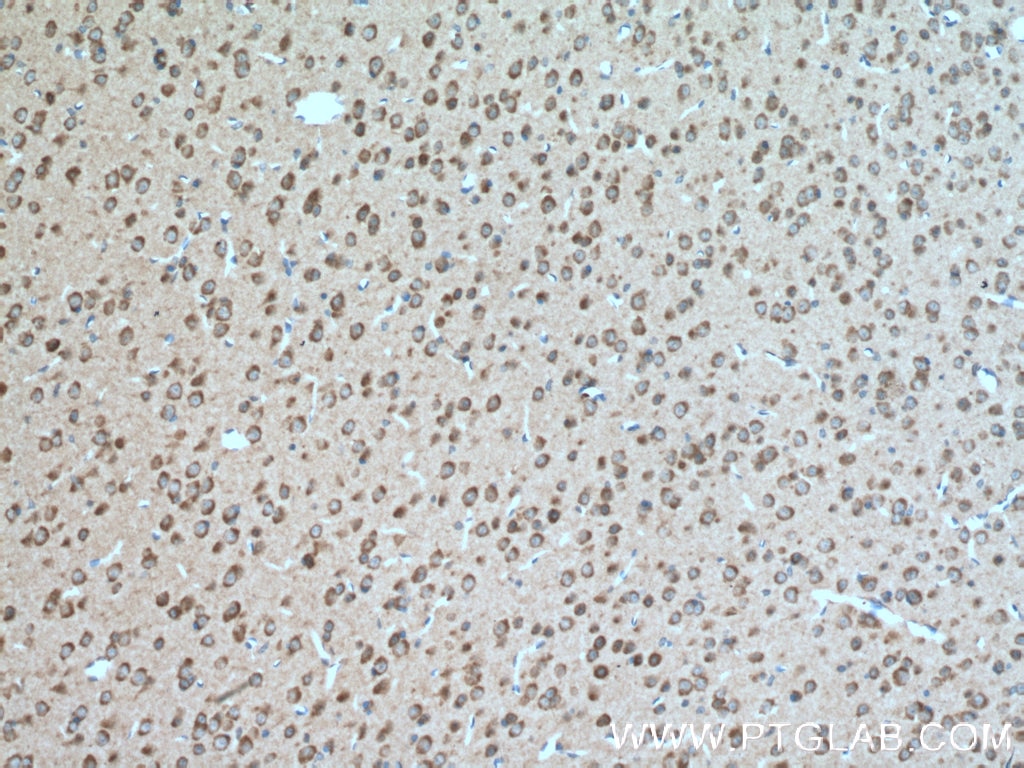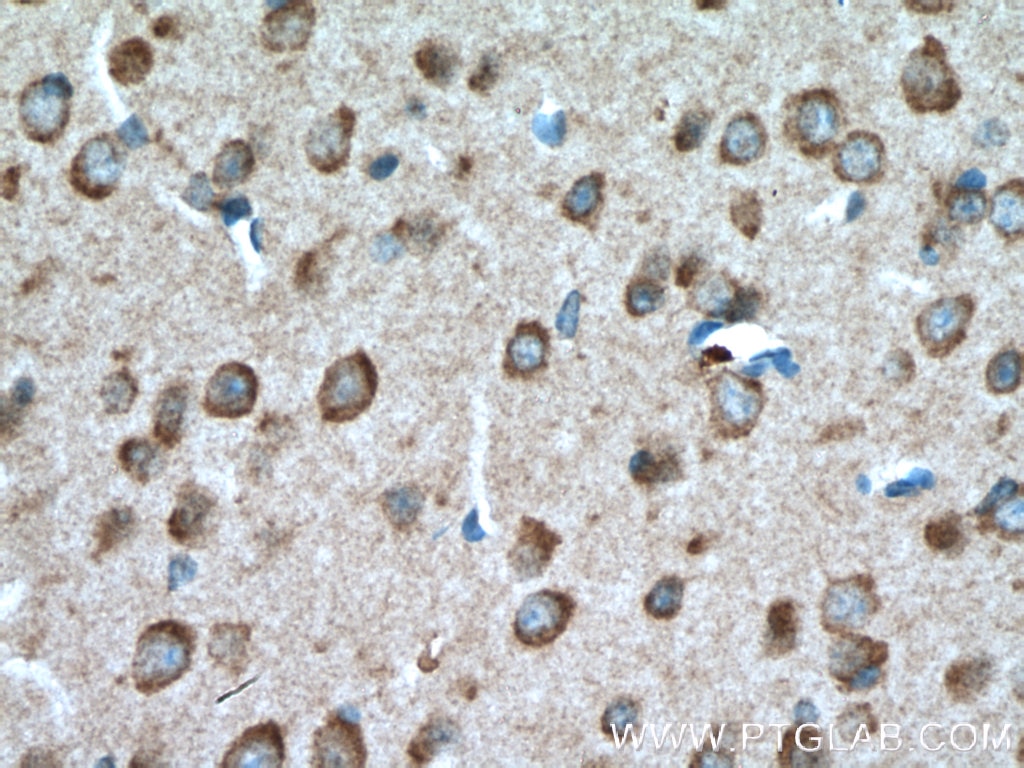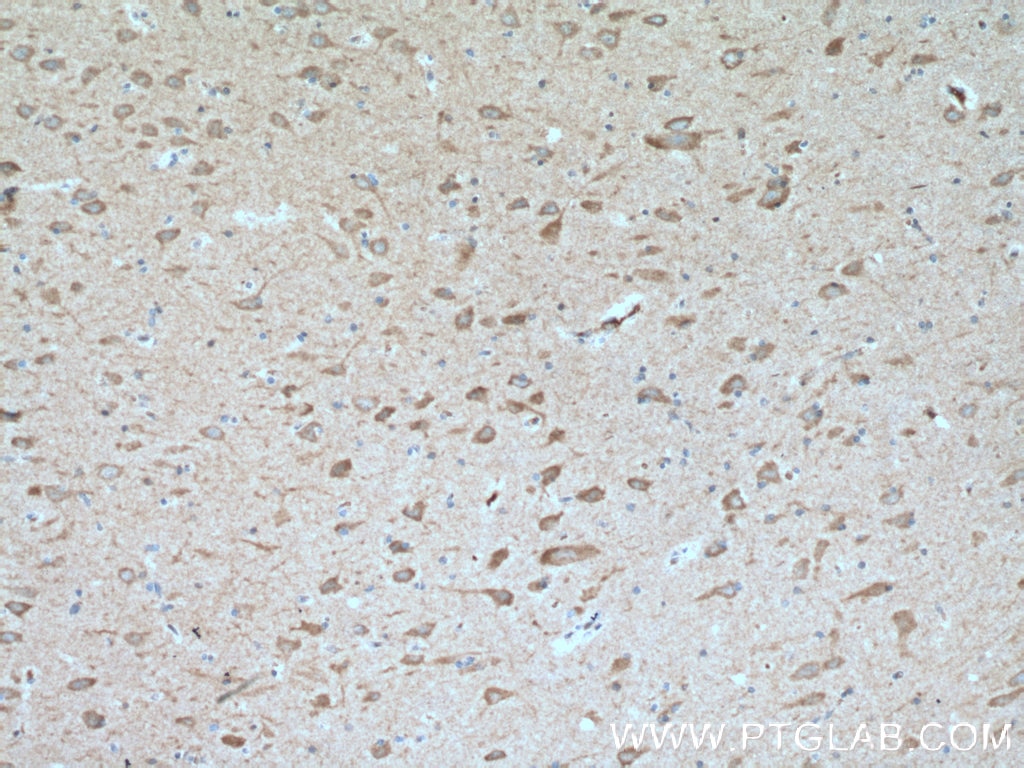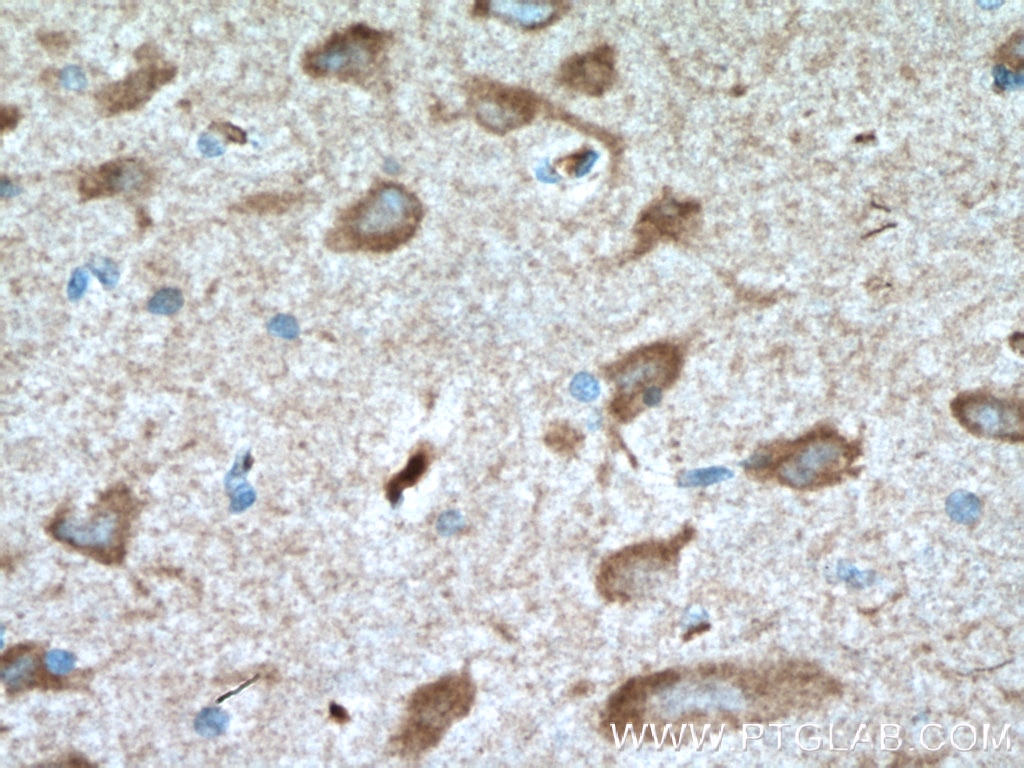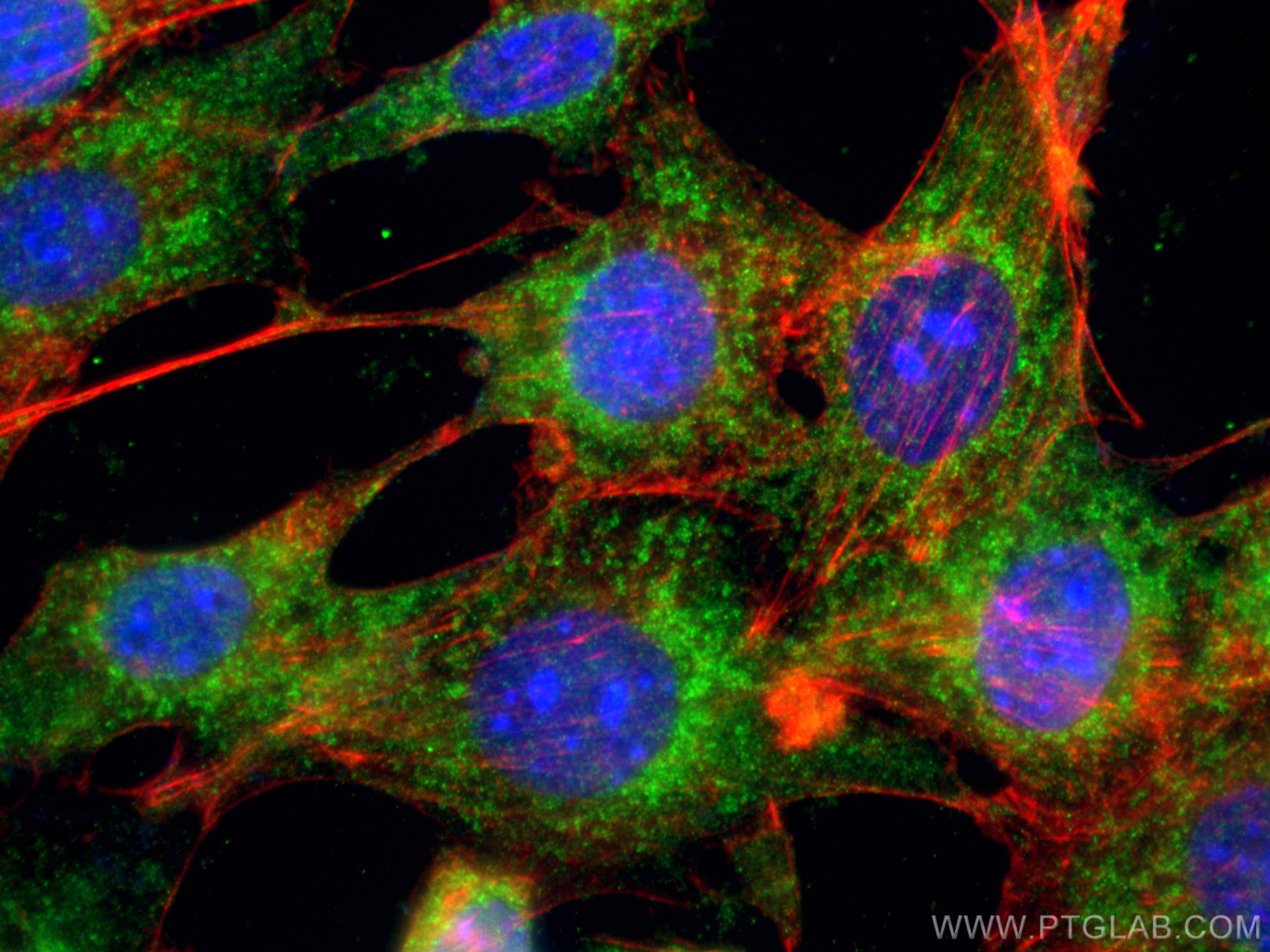- Phare
- Validé par KD/KO
Anticorps Polyclonal de lapin anti-TAK1
TAK1 Polyclonal Antibody for WB, IF, IHC, ELISA
Hôte / Isotype
Lapin / IgG
Réactivité testée
Humain, souris, Hamster et plus (3)
Applications
WB, IHC, IF/ICC, IP, CoIP, ELISA
Conjugaison
Non conjugué
N° de cat : 12330-2-AP
Synonymes
Galerie de données de validation
Applications testées
| Résultats positifs en WB | cellules NIH/3T3, cellules A2780, cellules A375, cellules A431, cellules CHO, cellules COLO 320, cellules HeLa, cellules K-562, cellules MCF-7, cellules SKOV-3, tissu cardiaque de souris |
| Résultats positifs en IHC | tissu de cancer de la prostate humain, tissu cérébral de souris, tissu cérébral humain il est suggéré de démasquer l'antigène avec un tampon de TE buffer pH 9.0; (*) À défaut, 'le démasquage de l'antigène peut être 'effectué avec un tampon citrate pH 6,0. |
| Résultats positifs en IF/ICC | cellules NIH/3T3, |
Dilution recommandée
| Application | Dilution |
|---|---|
| Western Blot (WB) | WB : 1:500-1:1000 |
| Immunohistochimie (IHC) | IHC : 1:100-1:400 |
| Immunofluorescence (IF)/ICC | IF/ICC : 1:50-1:500 |
| It is recommended that this reagent should be titrated in each testing system to obtain optimal results. | |
| Sample-dependent, check data in validation data gallery | |
Applications publiées
| KD/KO | See 3 publications below |
| WB | See 41 publications below |
| IF | See 1 publications below |
| IP | See 3 publications below |
| CoIP | See 2 publications below |
Informations sur le produit
12330-2-AP cible TAK1 dans les applications de WB, IHC, IF/ICC, IP, CoIP, ELISA et montre une réactivité avec des échantillons Humain, souris, Hamster
| Réactivité | Humain, souris, Hamster |
| Réactivité citée | rat, Humain, porc, souris, fish |
| Hôte / Isotype | Lapin / IgG |
| Clonalité | Polyclonal |
| Type | Anticorps |
| Immunogène | TAK1 Protéine recombinante Ag3041 |
| Nom complet | mitogen-activated protein kinase kinase kinase 7 |
| Masse moléculaire calculée | 579 aa, 64 kDa |
| Poids moléculaire observé | 64-67 kDa, 75-80 kDa |
| Numéro d’acquisition GenBank | BC017715 |
| Symbole du gène | TAK1 |
| Identification du gène (NCBI) | 6885 |
| Conjugaison | Non conjugué |
| Forme | Liquide |
| Méthode de purification | Purification par affinité contre l'antigène |
| Tampon de stockage | PBS avec azoture de sodium à 0,02 % et glycérol à 50 % pH 7,3 |
| Conditions de stockage | Stocker à -20°C. Stable pendant un an après l'expédition. L'aliquotage n'est pas nécessaire pour le stockage à -20oC Les 20ul contiennent 0,1% de BSA. |
Informations générales
Transforming growth factor-β (TGF-β)-activated kinase 1 (TAK1), also known as MAP3K7-mitogen-activated protein kinase kinase kinase 7- is a serine/threonine protein kinase triggering phosphorylation of AMP-activated protein kinase (AMPK) and playing a role in the signal transduction of TGF-β, bone morphogenetic proteins (BMPs), and various proinflammatory mediators.
What is the molecular weight of TAK1? Are there any isoforms of TAK1?
The molecular weight of full-length TAK1 is 55 kDa. There are four splicing variants of TAK1. TAK1-B represents the full-length variant, while TAK1-A, TAK1-C, and TAK1-D lack exons 12 and/or 16. TAK-1 variants differ in their expression levels across tissues (PMID: 11118615).
Is TAK1 post-translationally modified?
TAK1 kinase activity is modulated by interacting with TAK1-binding proteins (TABs). Binding to TABs triggers autophosphorylation of TAK1 and depends on polyubiquitination of receptor-interacting protein 1 (RIP1) (PMID: 8638164 and 11460167). Additionally, TAK1 can be ubiquitinated, acetylated, and O-glycosylated, which impacts its activity (PMID: 28106845).
What is the subcellular localization of TAK1?
TAK1 is present in the cytoplasm.
What is the tissue expression pattern of TAK1?
TAK1 is ubiquitously expressed.
How can TAK1 activity be monitored?
TAK1 requires phosphorylation for its activity. TAK1 autophosphorylation in the presence of TBPs occurs on Thr178, Thr184, Thr187, and Ser192 residues. The most commonly used phosphorylation readout is Thr187 phosphorylation.
Protocole
| Product Specific Protocols | |
|---|---|
| WB protocol for TAK1 antibody 12330-2-AP | Download protocol |
| IHC protocol for TAK1 antibody 12330-2-AP | Download protocol |
| IF protocol for TAK1 antibody 12330-2-AP | Download protocol |
| Standard Protocols | |
|---|---|
| Click here to view our Standard Protocols |
Publications
| Species | Application | Title |
|---|---|---|
Diabetes Hepatic P38 Activation Modulates Systemic Metabolism Through Fgf21-Mediated Interorgan Communication. | ||
EMBO Rep Mycobacterium tuberculosis protein kinase G acts as an unusual ubiquitinating enzyme to impair host immunity. | ||
PLoS Pathog Inducible LGALS3BP/90K activates antiviral innate immune responses by targeting TRAF6 and TRAF3 complex. | ||
Food Funct DHA-phospholipids (DHA-PL) and EPA-phospholipids (EPA-PL) prevent intestinal dysfunction induced by chronic stress |
